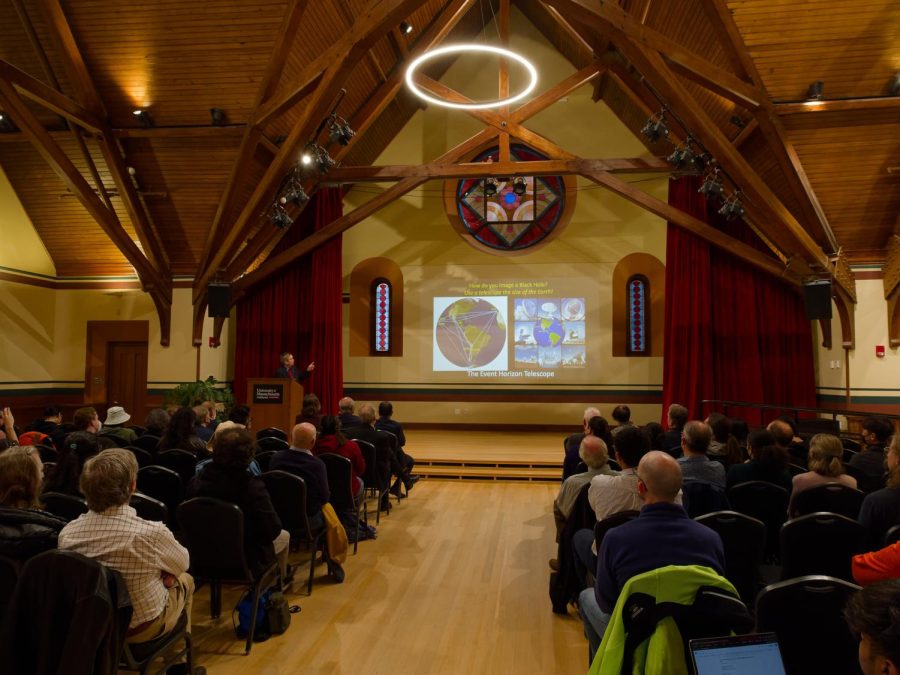
While most astronomers agree that a massive black hole sits at the center of every major galaxy in the universe, it is less clear how the gravitational pull of these regions interacts with the matter surrounding them.
Now, an international team of scientists led by University of Massachusetts astronomy professor Daniel Wang has discovered why the black hole at the center of the Milky Way galaxy emits less radiation than expected.
In their study published last month in the journal “Science,” Wang and his colleagues analyzed nearly five weeks of data from NASA’s Chandra X-ray Observatory telescope. They found that the black hole, called Sagittarius A-star, rejects 99 percent of the gaseous material falling toward it. Only a tiny portion makes it past the point of no return.
“It’s like Occupy Wall Street,” Wang said. “In this case, less than one percent of particles sacrifice themselves and give energy and momentum back to 99 percent for them to escape.”
Black holes are often portrayed as having an indiscriminate appetite, consuming every bit of cosmic material thrown their way. But these new findings tell a different story.
Wang related the process to pouring water into a sink. Gravity has no trouble pulling cold water down through the drain. But if you heat up the water, you create steam and much less of the material makes it into the drain. Most of it escapes into the air.
In the early universe, there was much more cool material floating around, which, like the cold water flowing into the drain, was easier to get into the black hole. As it consumed all this material, it became more and more massive and so did our galaxy.
The black hole was much brighter in those days because as matter fell into it, a huge amount of energy was released. Wang’s research suggests that the black hole is so faint today because very little material makes it inside, which means its growth has slowed to a crawl.
By analyzing the spectrum of X-ray radiation from the region, scientists were also able to rule out a previous theory that the radiation might have been coming from a high concentration of low-mass stars around the black hole.
It turns out there are many massive stars around the black hole, which are incredibly hot and produce strong winds, sweeping up material off the star’s surface. That material is dragged toward the black hole, but most of it seems to be ejected back into space, according to the study.
“This is the first evidence of this link between this accretion material towards the black hole and the origin of the matter, which appears to be the winds from massive stars,” Wang said.
The gas and dust around the black hole form a spiraling disc, explained James Lowenthal, an astronomy professor at Smith College. He said the black hole represents a “tiny fraction” of the Milky Way’s mass, yet it controls millions of stars.
In response to the new findings, Lowenthal said, “I’m delighted to see that we have the brightest, sharpest X-ray view.”
Despite these advances, Wang said astronomers do not yet have a good understanding of how black holes work. In fact, they cannot directly prove their existence because gravity prevents everything inside, including light, from escaping their grip.
“Right now we infer because when you have such a large concentration of matter in such small place there’s no alternative explanation,” Wang said.
That could change in the near future thanks to a partnership between UMass and Mexico’s National Institute of Astrophysics, Optics and Electronics. The two institutions operate one of the world’s largest telescopes on top of an inactive volcano in Mexico. After finishing touches are added to the Large Millimeter Telescope, researchers plan to point it toward Sagittarius A-star and, with the help of other giant telescopes around the world, capture the very first images of the black hole’s shadow.
In the meantime, astronomers are eagerly watching a cold gas cloud, called G2, which appears to be on course to collide with the black hole in the next few months. This rare event could answer many puzzling questions about the black hole’s behavior .
David Barnstone can reached at [email protected].



















Thaddeus Buttmunch • Oct 2, 2013 at 10:12 pm
WHAT?! No Comments on this Cosmically important Story?
only the Electric Theory of the Universe adequately explains this Mystery.